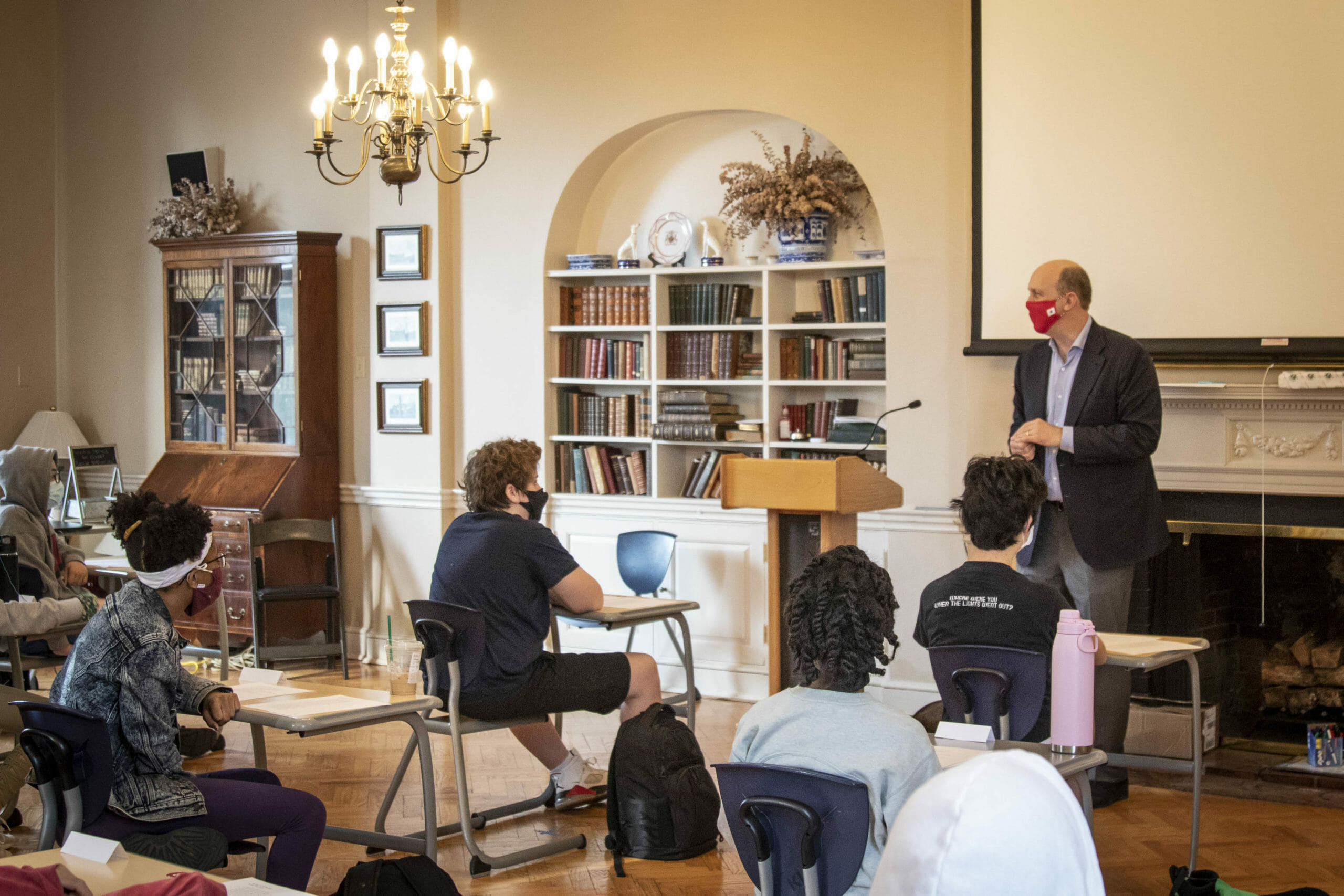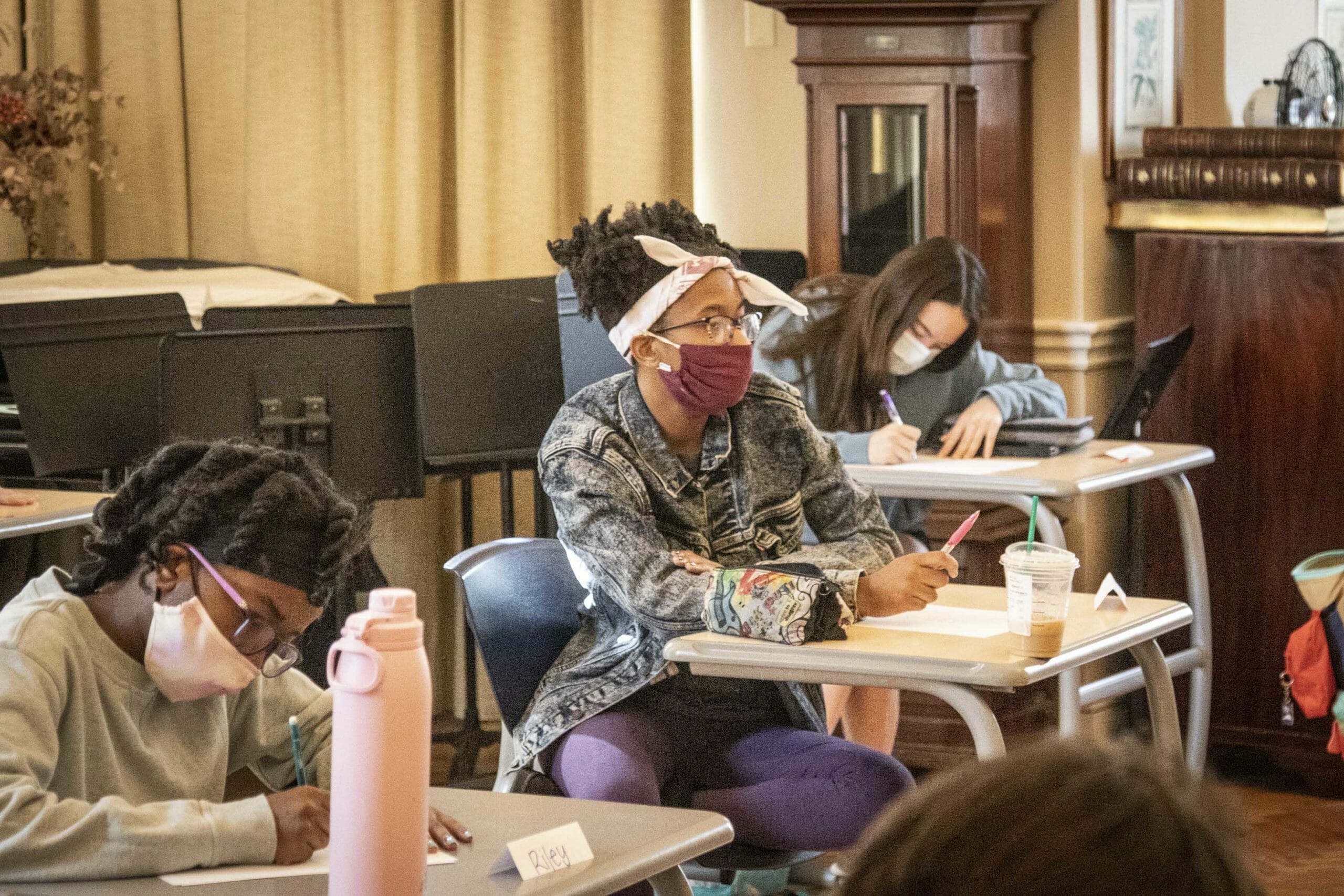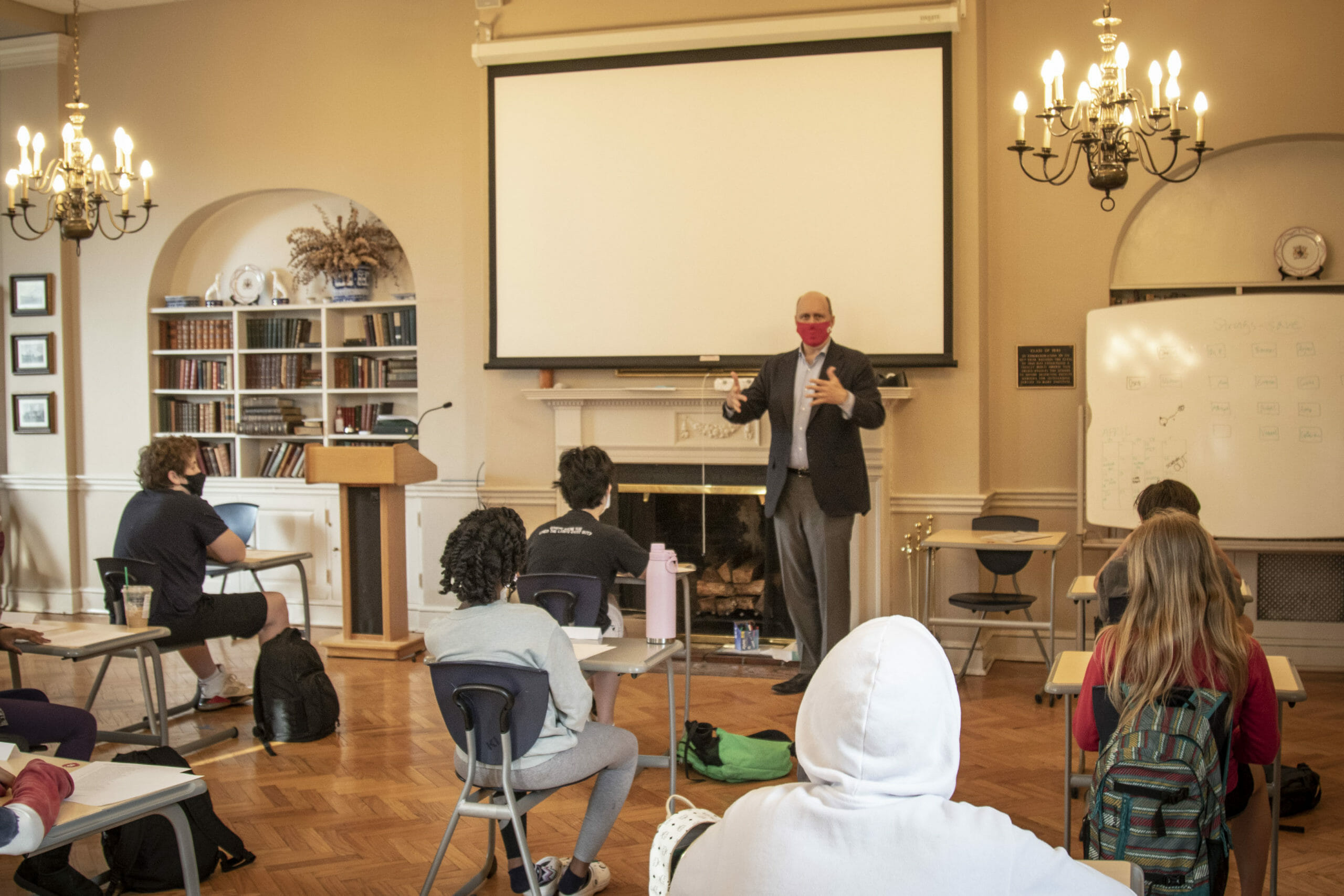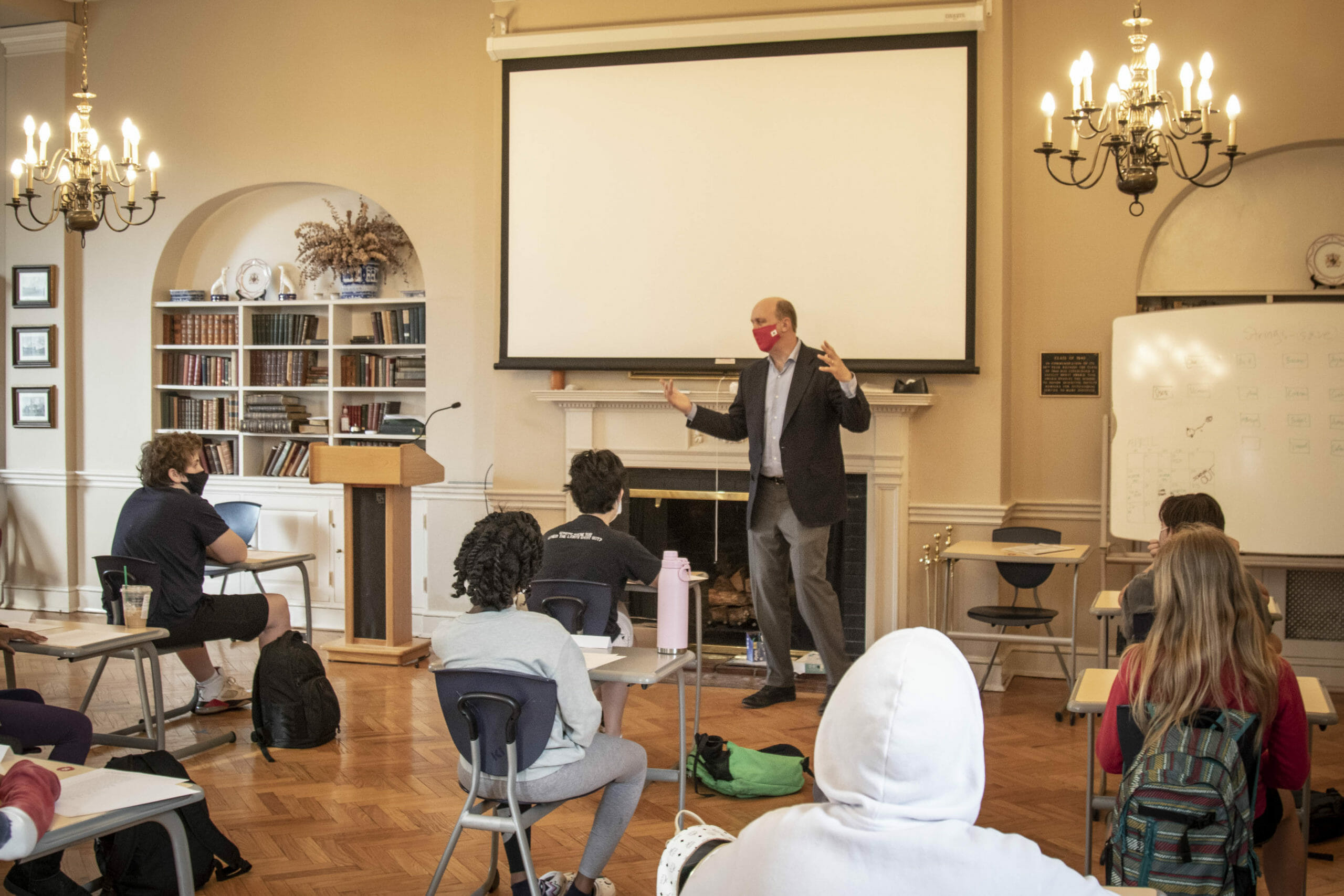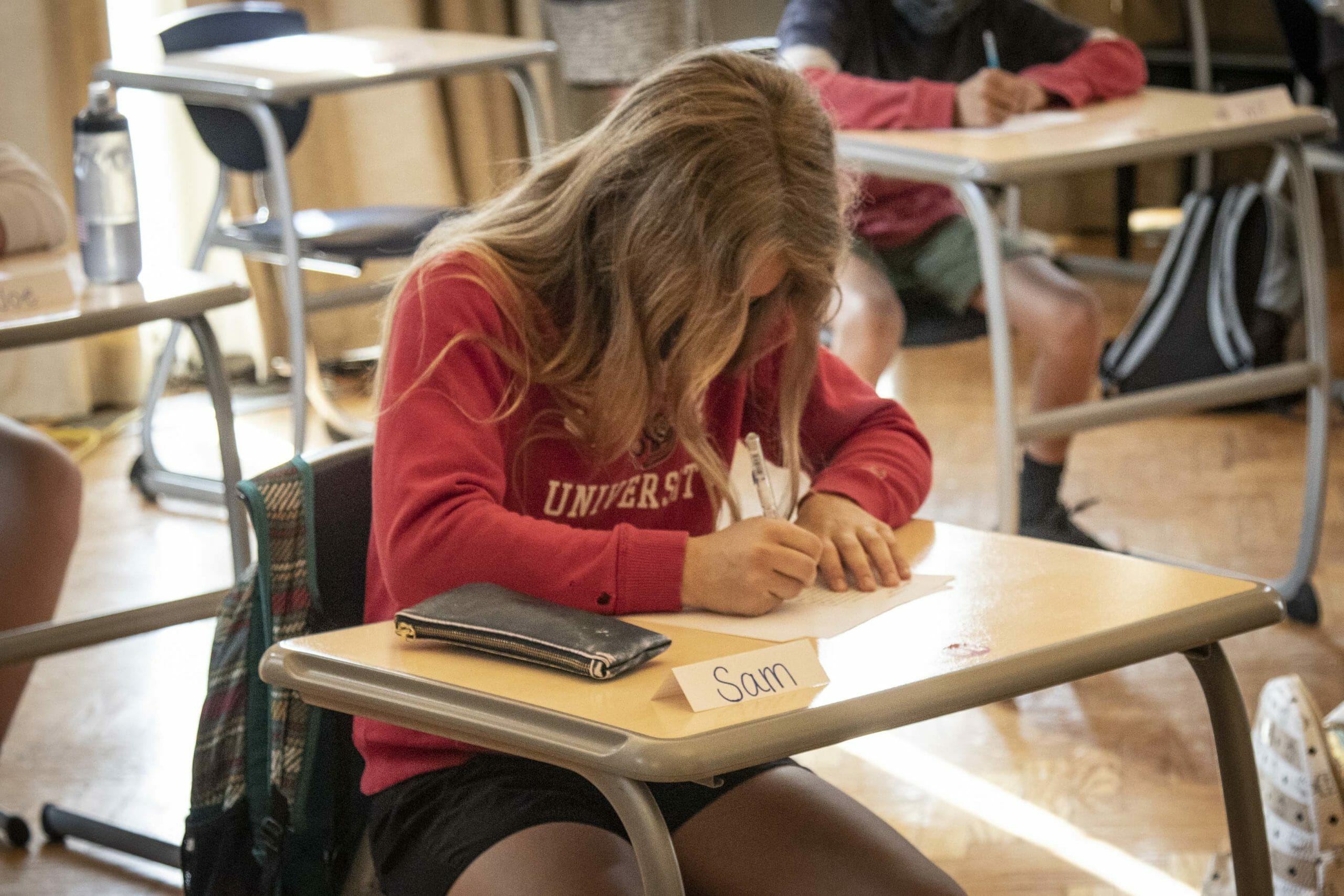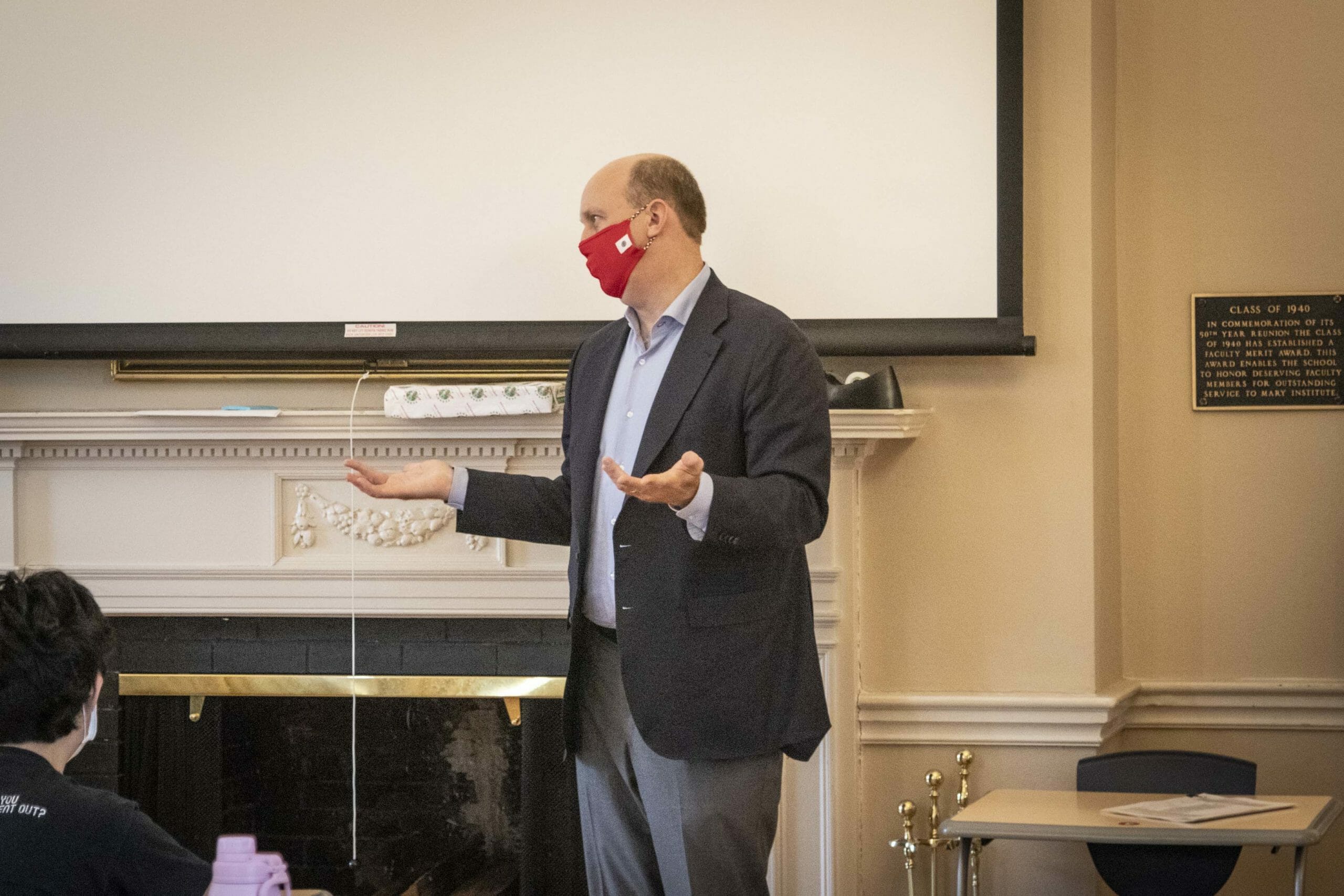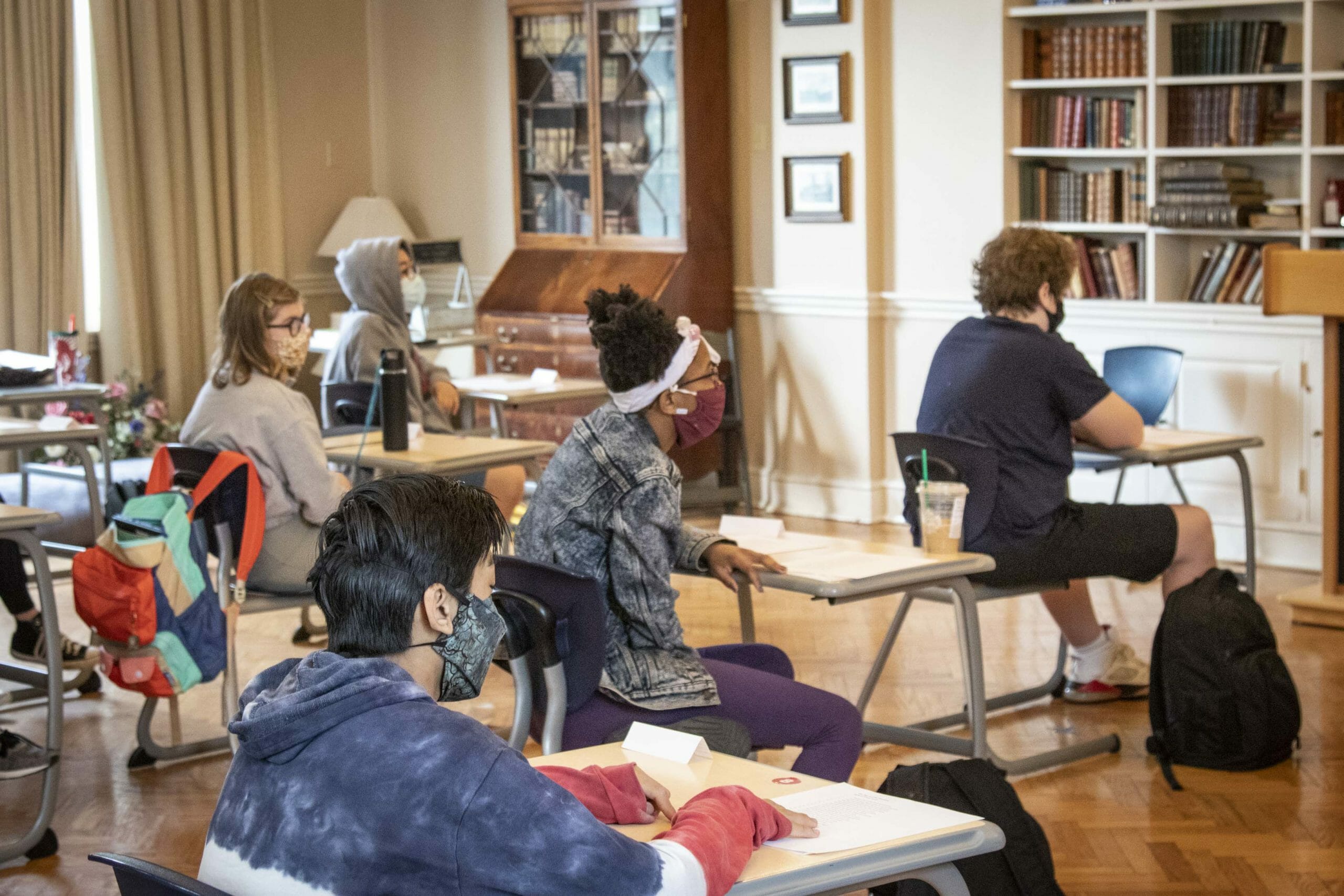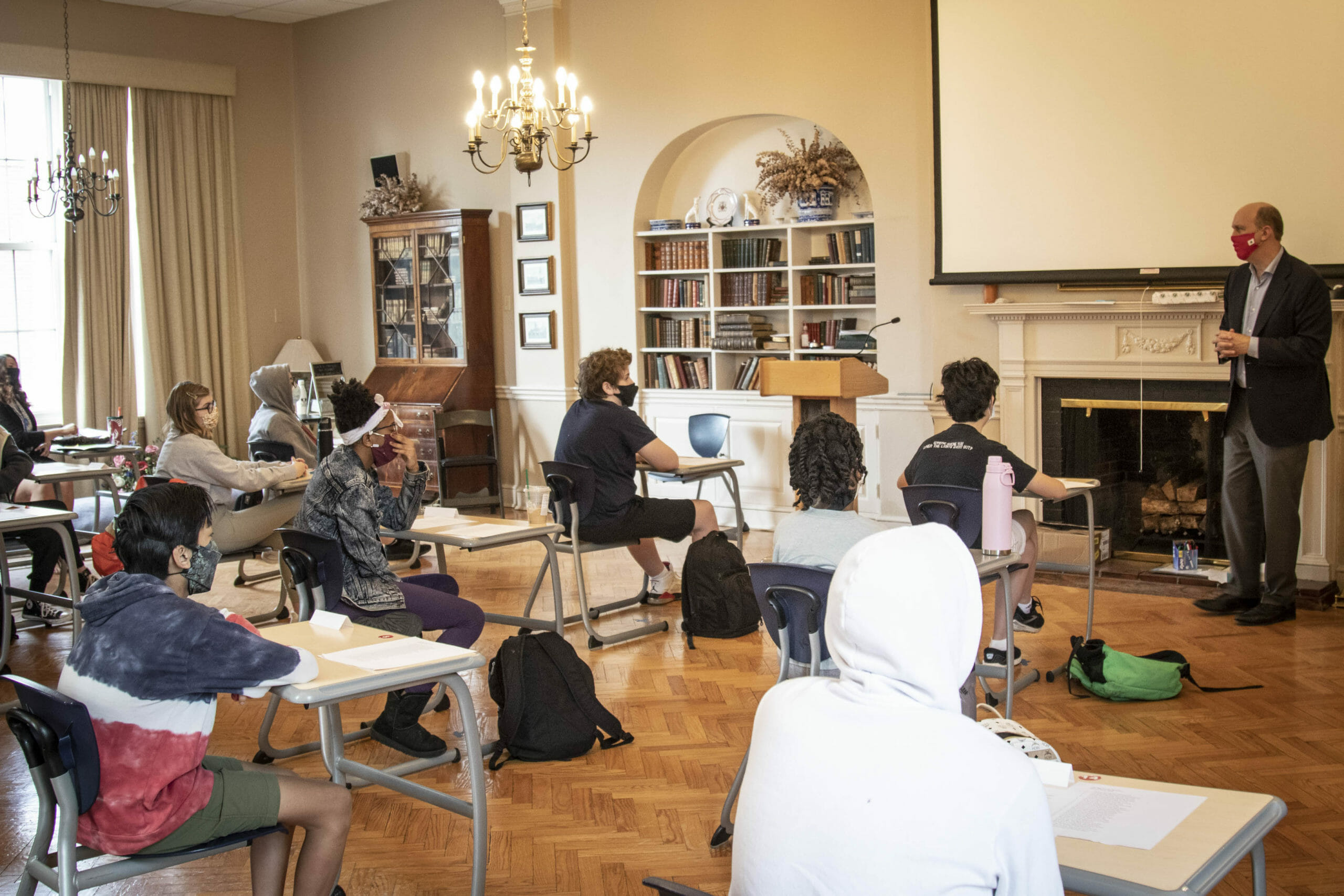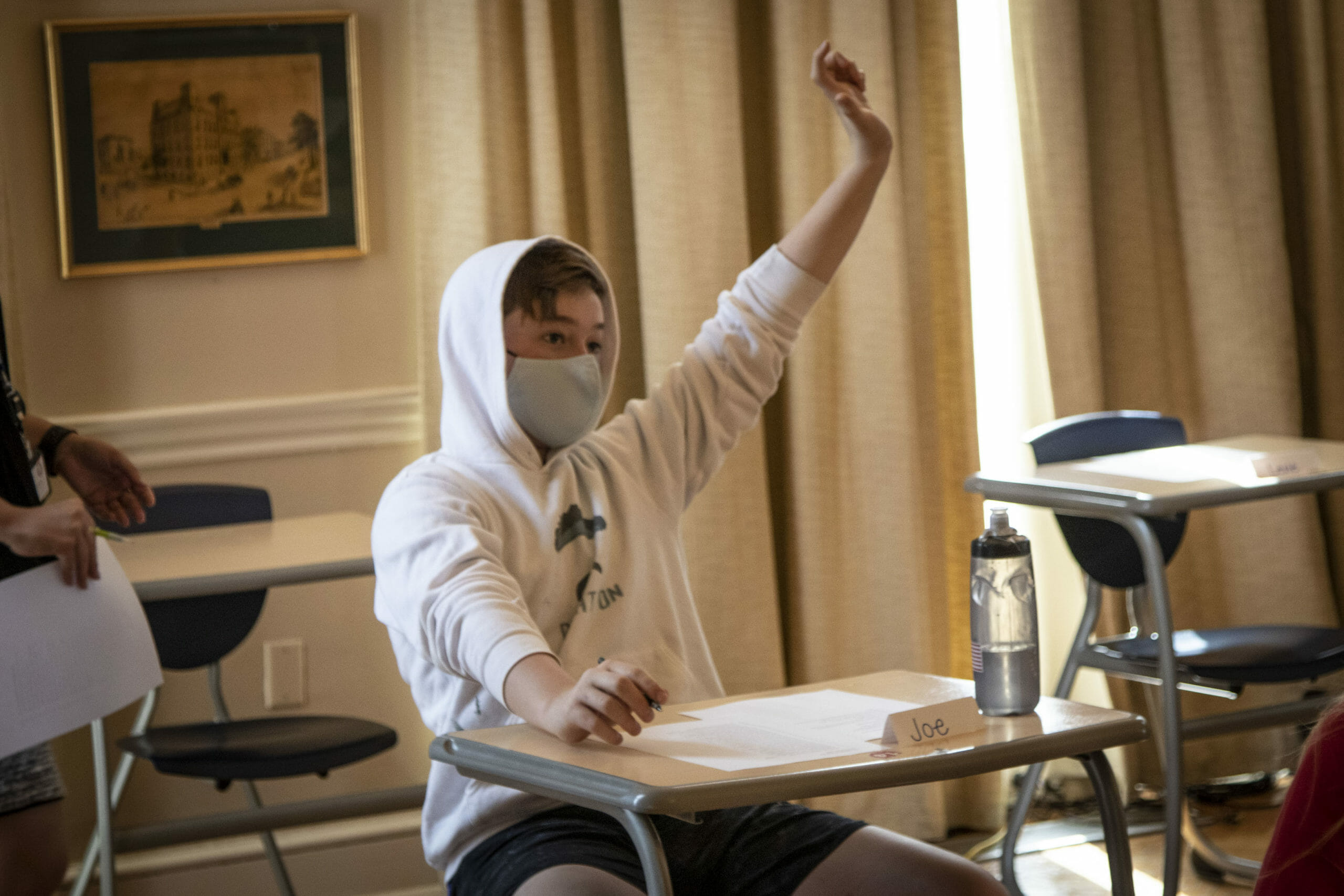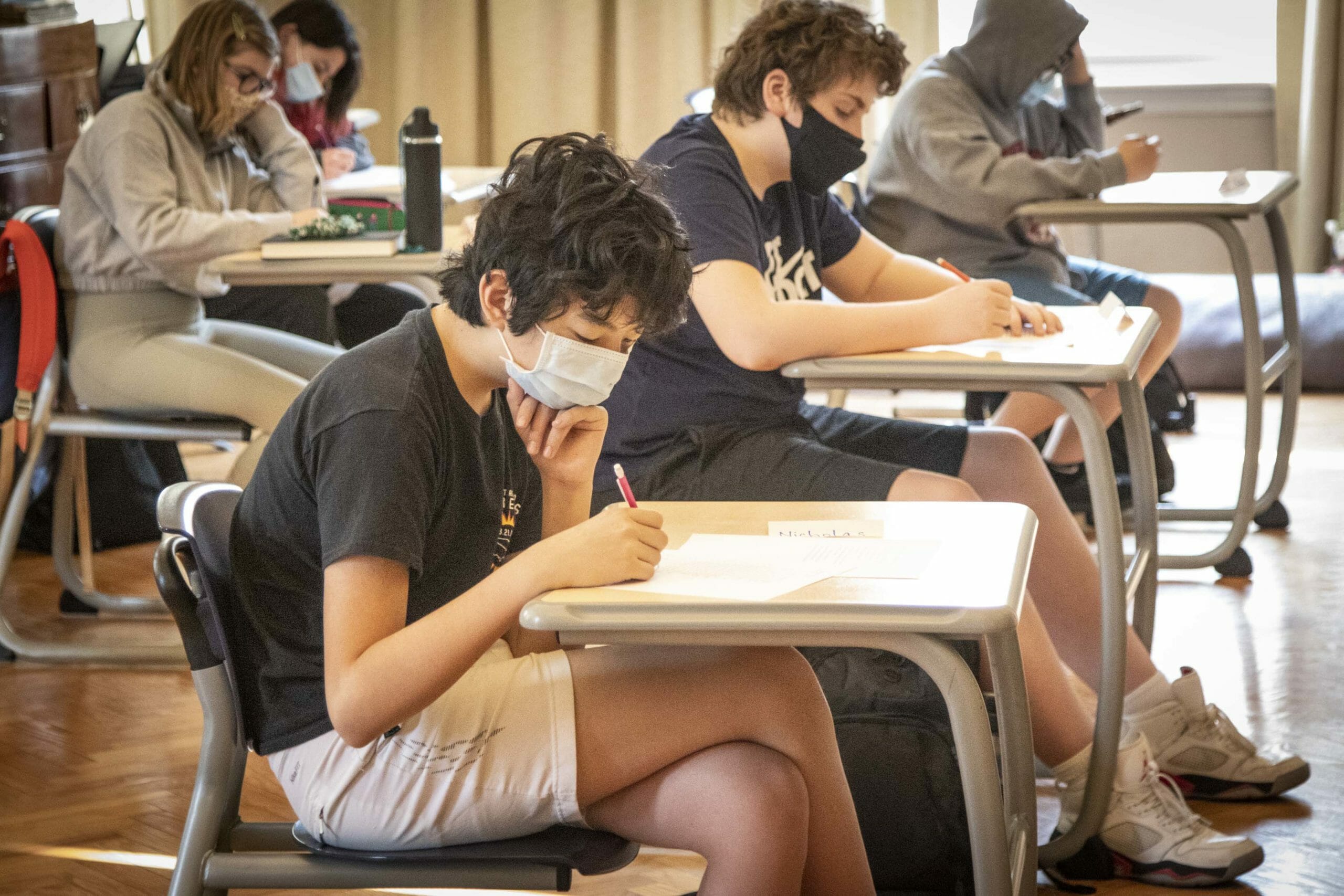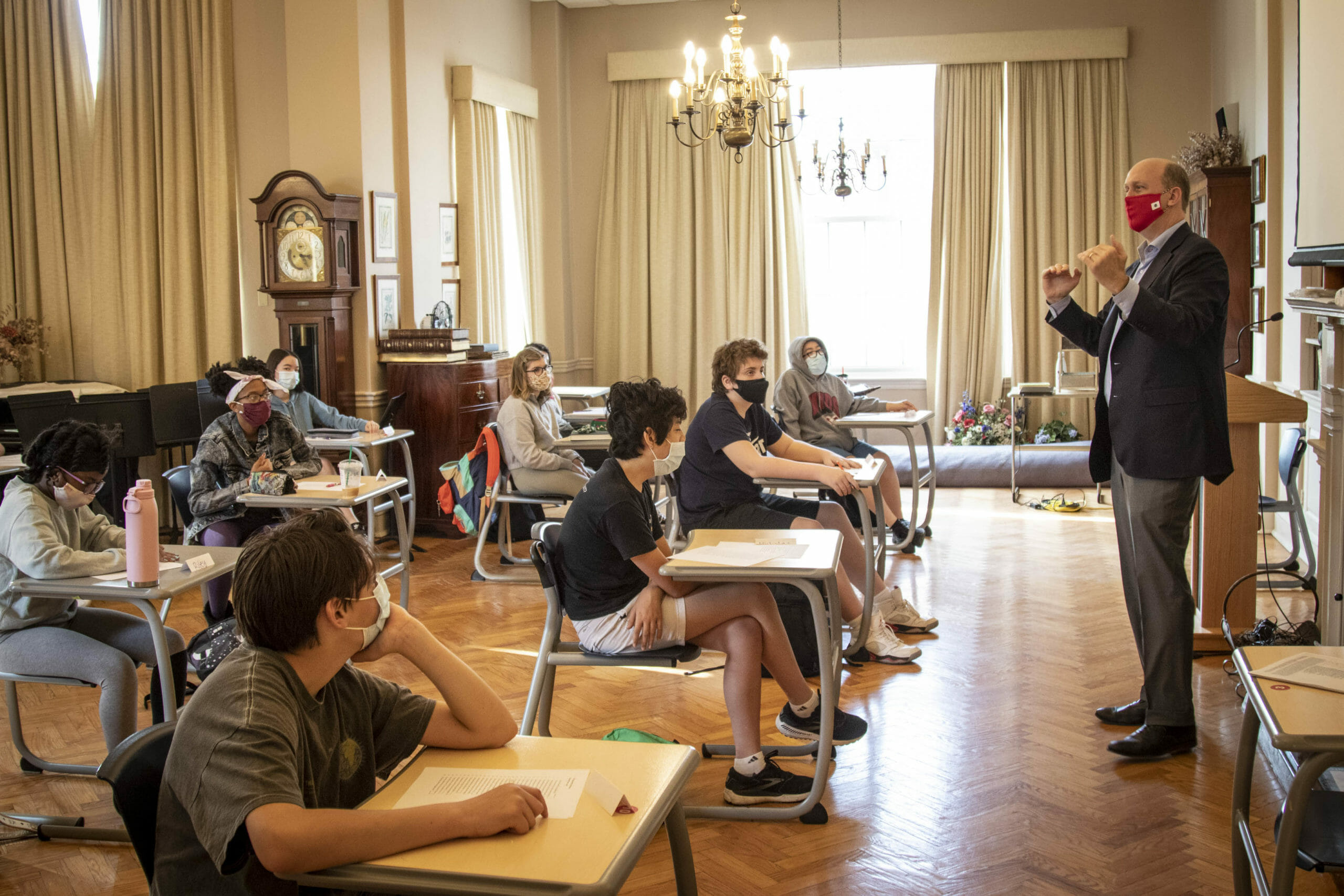It’s not every day that your English class in 7th grade gets to be taught by the Head of School. On Wednesday, Head of School Jay Rainey taught a poetry lesson in English Teacher Olivia Halverson’s 7th grade English class. With students now being primarily back on campus, they first took the opportunity to get to know Mr. Rainey more by interviewing him. From learning about his favorite sports (swimming to participate in and baseball to watch) and favorite class in school (math) to his favorite hobby (playing the piano, specifically playing jazz music) and dreams (that MICDS be a place where all students feel at home and a sense of belonging), it was nice for them to be able to connect at the start of class.
For the poetry lesson, the class read the 1928 Robert Frost poem called The Egg and the Machine. Mr. Rainey guided the students in evaluating the rhyme scheme. They noticed that the lines of the poem rhymed in pairs which he explained are known as « couplets. » He also introduced them to the concept of “iambic pentameter,” where every line has five metrical “feet,” or groups of syllables, each with an emphasis on the end of the foot rather than the beginning. He talked about student names that exemplified a trochaic metrical foot, such as the names Liam or Oscar, where the stress is on the first syllable. “Iambic feet have more of a sing-song rhythm than trochaic feet,” he said. “The couplets and the iambic pentameter were Frost’s way of making the poem easy to read—even to memorize.”
Another key concept the class discussed was the Doppler Effect. « The best analogy I have for this effect is a fire truck passing by a stationary object, » said Ms. Halverson. « The sirens appear to sound faster and higher-pitched when up close, and they sound longer and lower-pitched as they get further away. » This is due to the frequency of sound waves being compressed more and more as the fire truck approaches while they spread out as the fire truck gets more distant. In relation to the poem, which paints the picture of a train approaching and passing by someone walking alongside the tracks, Mr. Rainey read the poem aloud to demonstrate how the first 15 lines are a crescendo into a climax of the poem and the last 15 lines are a decrescendo into the ending of the poem—as if Frost intended to write the Doppler effect into the structure of the poem.
Mr. Rainey introduced the class to Google’s Ngram Viewer, a tool where you can look up various words to see how frequently they were used in English books over a certain timeframe dating as far back to the year 1500. He specifically looked up the words « feeling » and « method, » showing the contrast that the two are often inversely correlated; when words of emotion are most heavily used, words dealing with science and logic are typically low and vice versa.
The class also discussed the psychological state of the person in the poem. Described to be « angry against the gods of the machine » and that « he wished when he had had the track alone [that] he had attacked it with a club or stone, » they observed that once the train passed, the man noticed turtle eggs and made plans to throw them at the next train. Mr. Rainey explained the psychological phenomenon of displacement—that sometimes when people feel powerless, they take it out on someone or something weaker. How ironic that the powerless man takes his helplessness out on the already vulnerable turtle eggs which would have no impact on a train. This, Mr. Rainey shared, is part of the theory of naturalism.
What a great lesson for wrapping up the 7th grade poetry unit! Thank you, Mr. Rainey, for sharing your love of poetry with these 7th grade students!

